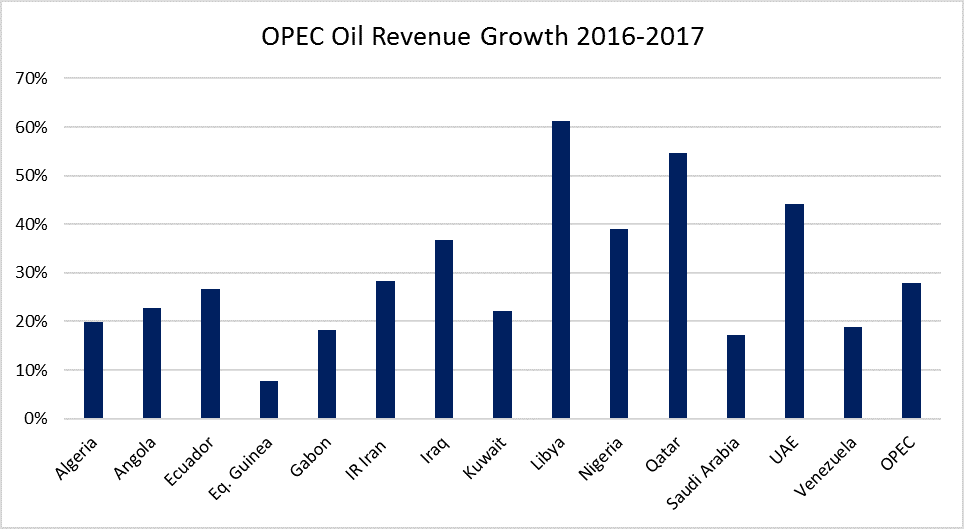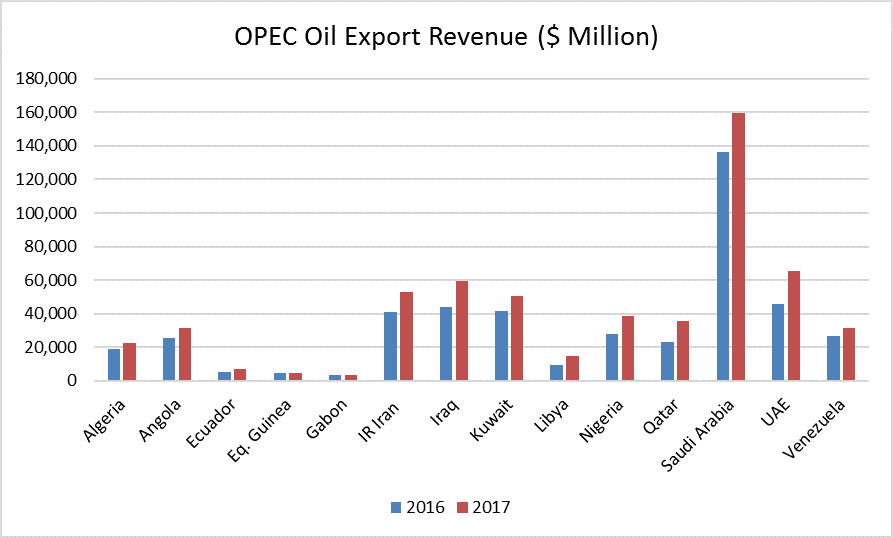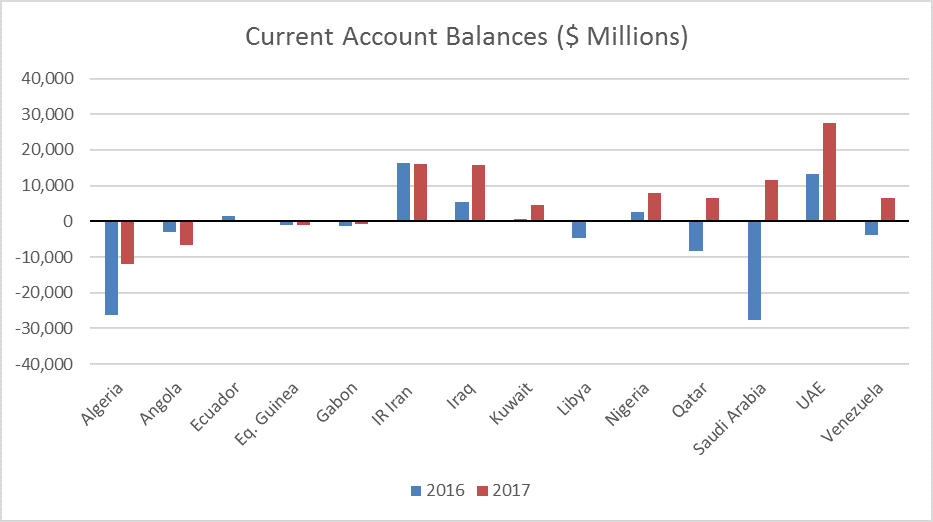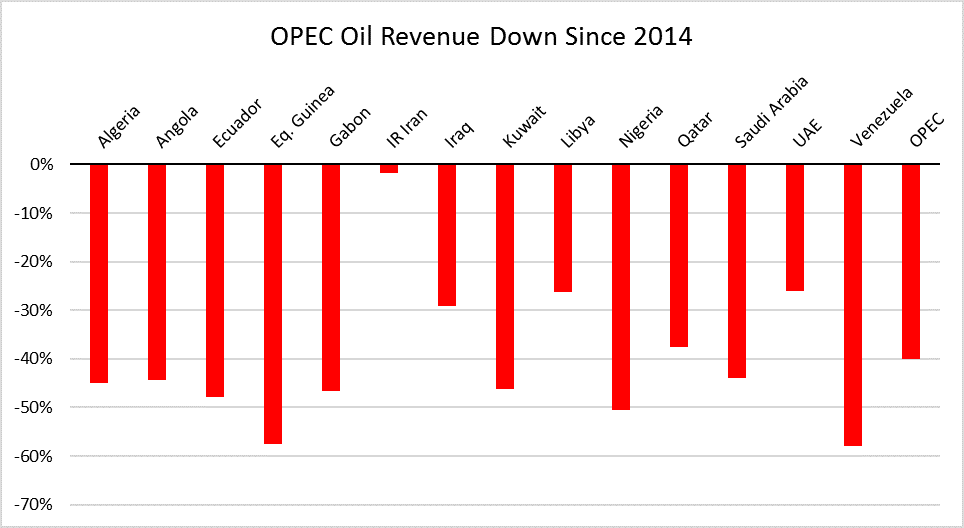Stats published by OPEC show $578 billion from oil exports in 2017; every member country saw revenue growth in 2017
OPEC’s output cut has played a significant role in rebalancing the oil market, bringing more than 1 MMBOPD off the market. Of course, the agreement was not motivated by some sort of altruistic motivations and OPEC has seen its revenues rise along with the climbing oil price.
The group produced smaller volumes in 2017 than in 2016, but improved oil prices mean every country in the cartel saw export revenue increase last year. In total, OPEC countries exported $578 billion in crude oil and petroleum products, up 28% from the $452 billion the group exported in 2016.
However, while all countries saw revenue increase, the gains were far from evenly distributed. Libya saw the largest increase in revenue last year, as it was one of the few OPEC members not subject to the cut agreement. Libya exported $15 billion in crude oil in 2017, up 61% from 2016 revenue. This is significant growth, but actually falls below Libya’s output growth from 2016 to 2017. Libya produced an average of 390 MBOPD in 2016, compared to 817 MBOPD in 2017.
Qatar saw the second-largest gain in oil revenue, expanding income by 55%. The country was able to work around its dispute with Saudi Arabia, exporting $35.5 billion from petroleum exports last year. Even Venezuela saw export revenue rise by 19% last year, despite unintentionally cutting production beyond the levels it was obligated to.
Saudi Arabia actually saw one of the lowest increases in revenue from 2016 to 2017, with export revenue rising by only 17%. This is likely because the country intentionally cut production beyond its agreed levels to boost overall compliance, especially in the first half of the year.
Current accounts shifting to black
The increased revenue has been welcomed by OPEC governments, many of which rely on oil exports for a large portion or even most of their overall revenue. Only two countries saw their current accounts worsen in 2017, and several countries swung from a deficit to a surplus.
Saudi Arabia reported a current account surplus of $11.5 billion, the first surplus since 2014, with many other countries reporting similar results.
Current revenue well below pre-downturn levels
Despite the year-over-year increase, OPEC nations are earning only a fraction of what they earned before the downturn began. The cartel has paid a very real price for attempting to force out U.S. shale, and revenue is down significantly from 2014 levels. The $578 billion OPEC collectively earned from petroleum exports may be impressive, but it pales in comparison to the $964 billion earned in 2014, or the $1.2 trillion earned in 2012.
Most countries are receiving only 60% of what they got from oil exports in 2014.
Only one country received as much as it did before the downturn, Iran, which benefitted from fewer sanctions in 2017. In Venezuela, on the other hand, oil revenue was down 58% from pre-downturn levels. Overall, OPEC’s revenue from oil exports is comparable to what the group was making in 2005.






